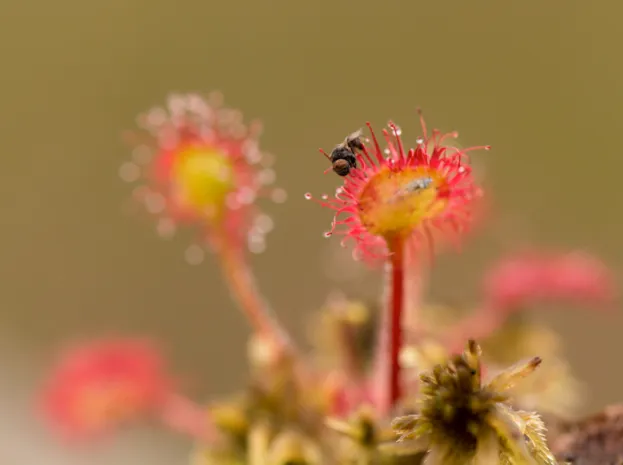Ballynahone Bog at dawn © Ben Hall / 2020 Vision
Stakeholders from the government, third sector, scientific and land managing communities have come together to create the UK’s first collaborative Peatland Strategy.
“Although almost all peatland habitats in the UK are degraded – and require urgent action - the country has been world leading in its strategic approach to peatland conservation, recognising and stepping up to the challenge,” says Stuart Brookes, chair of the IUCN UK National Committee. “”

Irish peatland © Clifton Bain
Peatlands are the largest store of carbon on land, although they occupy only three per cent of the planet’s land surface.
Peatlands are home to a variety of wildlife, including many specialised species.

Sundew at Dersingham Bog © Pete Quinn
There are also a number of services that peatlands provide for humans, such as providing clean water and acting as buffers for environmental disasters such as flooding.
Peatlands cover 12 per cent of the UK, and Scotland has 80 per cent of the UK’s blanket bog (the deepest peat).
The UK Peatland Strategy has six goals:
- Conserve, restore and enhance the best peatlands
- Restore damaged peatlands to functioning ecosystems
- Adapt management of drained peatlands
- Sustainably manage healthy peatlands with compatible land uses
- Maintain a programme to oversee progress against strategic goals
- Communicate value of peatlands to a wide audience.

Bog rosemary is found on peatlands © Tim Melling
“Partnerships across the country have effectively delivered peatland restoration, often on a large-scale,” says Jonathan Hughes, CEO of the Scottish Wildlife Trust and a IUCN Global Councillor.
“Yet this work has barely scratched the surface of what is required. The UK Peatland Strategy gives us a blueprint to expand their successes into more challenging areas and for the long term.”

